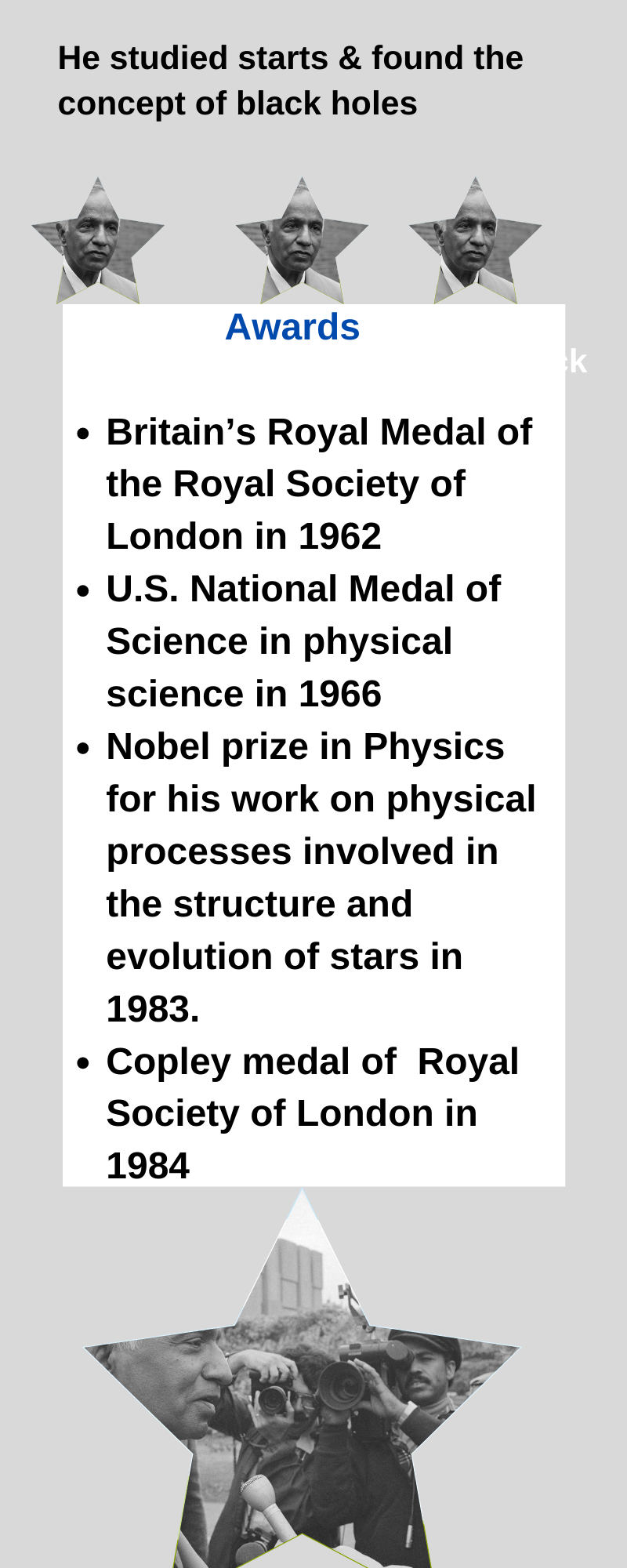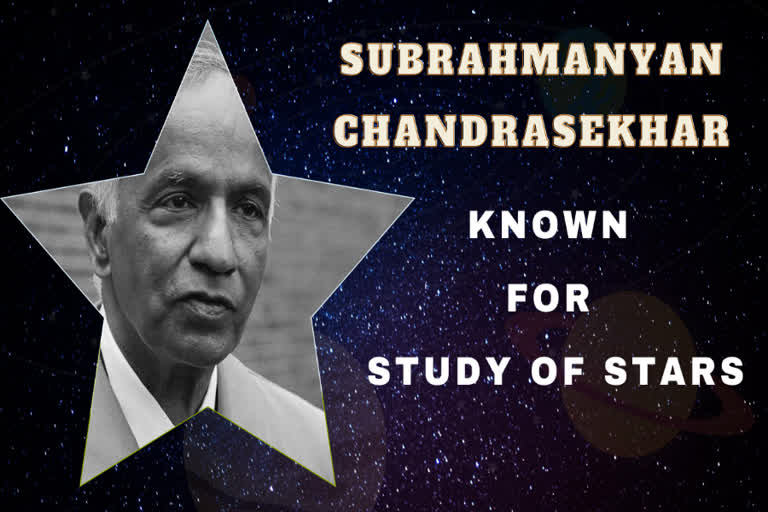Hyderabad: Born on October 19, 1910, to a Tamil family in Lahore which is now in Pakistan, he was the first son of C Subrahmanyan Ayyar and Sitalakshmi (Divan Bahadur) Balakrishnan. He had six sisters and three brothers. He was tutored at home till he was 12-years-old.
- Subrahmanyan Chandrasekhar, was an applied mathematician and astrophysicist. He completed his university education at Presidency College, Madras graduating with a Bachelor of Science degree in physics.
- In June 1930, he moved to Britain for graduate studies. He was awarded a Government of India scholarship to study at Cambridge as a member of Trinity College where he became a research student under the supervision of Professor R. H. Fowler. He took his Ph.D. degree at Cambridge in the summer of 1933.
- In October 1933, he was awarded a Prize Fellowship at Trinity College for the period 1933-37.
- He was affiliated with the University of Chicago for 50 years, was the first to postulate the existence of objects so dense that nothing, not even light, could escape them.
- He found that when a star much more massive than the Sun exhausted its fuel it would collapse indefinitely. the result is defined as either a "black hole' or a neutron star.
- During the period from 1971 to 1983, he undertook research into the mathematical theory of black holes, then for the last period of his life, he worked on the theory of colliding gravitational waves.
- Chandrasekhar published around 400 papers and many books.
His research revolved around the following topics:-
- First, he studied stellar structure, including the theory of white dwarfs, from 1929 to 1939, then stellar dynamics from 1939 to 1943.
- He looked at the theory of radiative transfer and the quantum theory of the negative ion of hydrogen from 1943 to 1950, followed by hydrodynamic and hydromagnetic stability from 1950 to 1961.
- During most of the 1960s, he studied the equilibrium and the stability of ellipsoidal figures of equilibrium but during this period he also began working on topics from general relativity, the radiation reaction process, and the stability of relativistic stars.
- He retired from the University of Chicago in 1980, although he stayed on as a post-retirement researcher. In 1983, he published a classic work on the mathematical theory of black holes.

Interesting Facts
- During World War II, he researched for the US Army and was invited to join the Manhattan Project which produced the world’s first nuclear bombs, but delays in the processing of his security clearance prevented him from contributing to the project.
- Sixteen years after he came to the US, Chandrasekhar was granted US citizenship in 1953.
- Chandra was also a popular teacher under whose guidance over fifty students completed their PhDs. His research explored nearly all branches of theoretical astrophysics and he published ten books, each covering a different topic, including one on the relationship between art and science.
- The Nobel Prize winner served as the editor of the Astrophysical Journal and turned it into a world-class publication.
- An expert on Isaac Newton, Chandrasekhar completed a translation of Newton’s masterwork, “The Principia,” into the language of modern mathematics. He published his book, “Newton’s ‘Principia’ for the Common Reader.”
- Chandrasekhar was the nephew of C. V. Raman, who was awarded the Nobel Prize for Physics in 1930.
Also Read: First anniversary of Chandrayaan-2 launch



